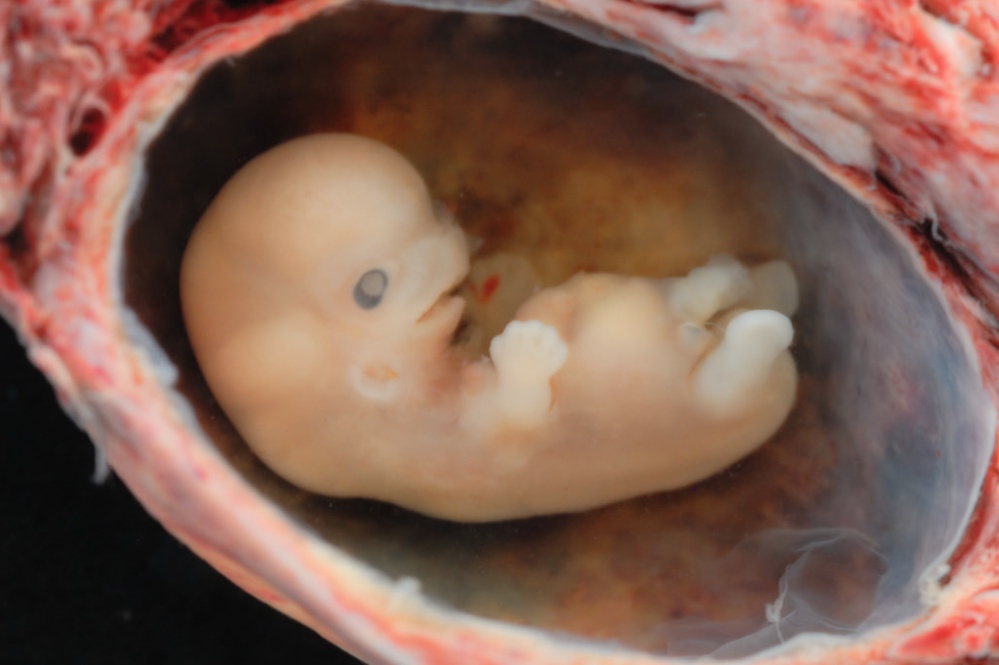The following was originally written as a Facebook post, and the author has granted permission to share it on Live Action News. The post’s author, Sarah Cleveland, is an abortion abolitionist and a nationally registered ultrasound tech specializing in OB/GYN with 15+ years experience. She has reportedly been banned for 30 days from Facebook as a result of posting this and other viral posts about abortion — like this one. You may follow Sarah here on Facebook.
When I tell people that there is no medical reason for an abortion at any stage of pregnancy, people often bring up the issue of ectopic pregnancies. Even well meaning, concerned pro-life people bring this up. They don’t know how to answer it and for this reason may say they are “pro life with exceptions”. This is the loophole pro aborts need to push abortion on demand, without restrictions, and without apology.
If we are to abolish the evil of abortion, we would do a service to ourselves (and to the babies!!) to better understand what is (and is not) an ectopic and how it relates to abortion.
An ectopic pregnancy is a pregnancy in an abnormal location. It is also called an extrauterine pregnancy, meaning a pregnancy outside of the uterus. Most of the time (95-97%) they are found in the fallopian tubes. Even so, ectopic pregnancies are rare.
In tubal ectopic pregnancies, the mother presents symptoms of pelvic pain, spotting, nausea, and abnormal hCG levels. By the time the ectopic is located, mostly before 7 weeks LMP, (dated from last menstrual period), the baby is already dead. There is nothing in the tubes to sustain this life.
Using ultrasound, we can detect the abnormal area between an ovary and the uterus, where the tubal pregnancy is located. It contains [chorionic] villi, (the primitive cells that would make the placenta), maternal blood, pregnancy cells and debris, and a non living microscopic baby. What we see is a small (1-3cm) heterogeneous area in the pelvis, not a living baby with a heartbeat.
READ: Why miscarriage, ectopic pregnancy, and early delivery are not abortions
The danger of a tubal pregnancy is that the tube is not very elastic, highly vascular, and not designed to carry a pregnancy. If it ruptures, the mother will have internal bleeding which will likely cause maternal death without immediate treatment. So, we intervene to remove the ectopic, often surgically, from the mother. This is not an abortion.
For the even more rare instances when a tubal pregnancy is found to be still living, (I have seen 2 in my ultrasound career of 15 years and the babies were each between 7-8 weeks), the ethical treatment would be watchful waiting. If the mother is stable, she can be sent home with very strict orders about what to watch for and what to do if/when things start going downhill. Or, we can admit the mother to the hospital, if she is unstable. Here, serial ultrasounds and blood work should be done to monitor hCG levels (found in simple blood draws) as well as monitoring the mother’s vitals. Once the baby dies, surgery to remove the tube is then morally acceptable.
Some physicians also prescribe a drug called methotrexate to attack and kill the ectopic. Even though the baby is not living, other cells can be, and their growth needs [halted], such as the chorionic villi and amnion. This is not as effective as surgery, but it is less invasive and some doctors decide to give this a try first to see if it will dissolve the area of concern. This can only be done if the ectopic is very small and the mother is stable.
If free fluid is seen within the pelvis, with confirmation of an ectopic, emergency surgery is indicated as the mother has already started to internally bleed and the tube has ruptured. If the tube is ruptured, the baby has died. Again, not an abortion if removing an already dead baby.
For the even more rare cases of an ectopic pregnancy where the baby is located in the abdominal cavity, these babies have a much better chance of survival. These are the ones we hear of occasionally in other countries where ultrasound and other medical technologies are not readily available or used. What the baby needs to attach to in order to live is endometrial tissue. If the mother has endometriosis, abnormal placement of endometrial tissue outside the uterus, then there is potential an extrauterine pregnancy can attach there and grow to term. (Amazing, actually.) Abdominal ectopics are <1% of all ectopics.
Lastly, all of these situations are real medical conditions which need to be monitored and treated through a hospital. They cannot be treated at an abortion clinic. Why?
1) Abortion facilities are not real surgical centers. They are designed to dilate and scrape the inside of the uterus only going through the vaginal vault and cervix. There are no abdominal incisions. No surgery on tubes. These facilities aren’t set up like that because they aren’t really in the business of true medical care. That is not their purpose. And although they can dispense pills for an intrauterine (normal) pregnancy, they cannot dispense pills for an extrauterine pregnancy. Abortion pills to contract the uterus are not the same as pills to treat an ectopic condition.
2) Ectopic pregnancy situations are true medical emergencies which require prompt attention. No pregnant woman is going to make an appointment for her suspected or known ectopic. She needs to go to the ER, not make an appt for next Wednesday at 1pm. (Abortions are by appointment only, not walk ins.) So, next time you’re out ministering at an abortion mill and a mother tells you she is there for an ectopic, she’s lying. Call her bluff and continue to call her to repentance and to leave that wicked place.
There is no reason for an #abortion. Not a social reason, not a personal reason, and not a medical reason. #Ectopics should be understood and not used in any way to justify killing babies.
Editor’s Note: The opinions expressed in this post are those of the guest author.







